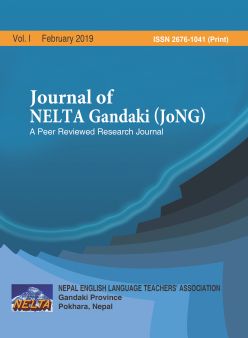Paradigm Shift in Research: Emergence of Mixed Methods Research Design
DOI:
https://doi.org/10.3126/jong.v1i0.24462Keywords:
concurrent, embedded, multiphase, sequential, transformativeAbstract
Between the lines of quantitative and qualitative inquiries, mixed methods research, which has taken a considerable space in academia, has emerged as a promising design as a mark of paradigm shift from pure method to the hybrid one. In this context, this article aims to explore the phenomenon of the mixed methods research design in terms of reasons for use, historical developments, types, and assessments. To achieve this goal, document analysis method has been used. Only the secondary sources like books, journals and archives have been used for documenting information and making meaning from them. The conclusion is that mixed methods research design has been a current practice for many reasons in academia. This implies that the new paradigm should profusely be used in the field of research at universities and research centers.
Downloads
Downloads
Published
How to Cite
Issue
Section
License
This license allows reusers to distribute, remix, adapt, and build upon the material in any medium or format for noncommercial purposes only, and only so long as attribution is given to the creator.




